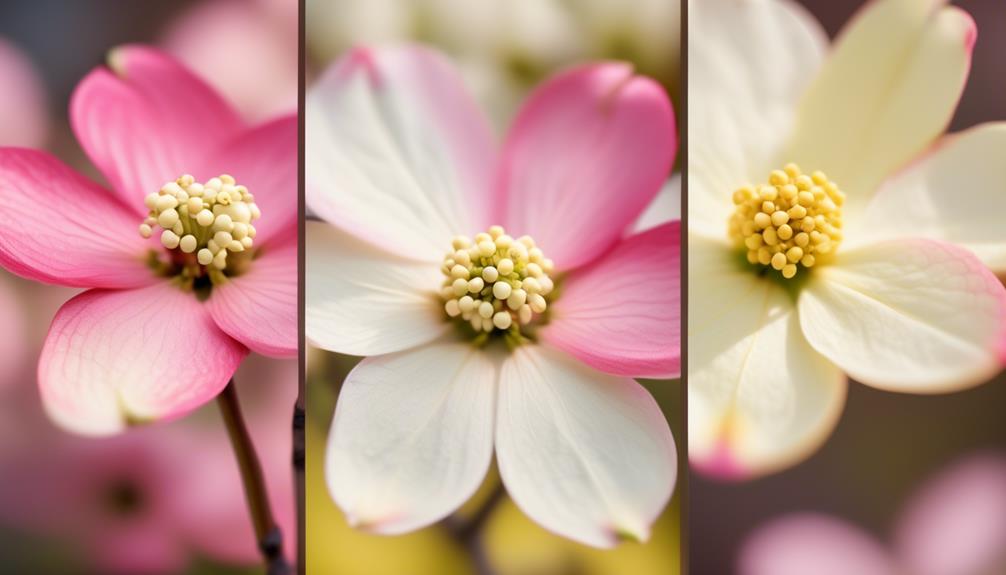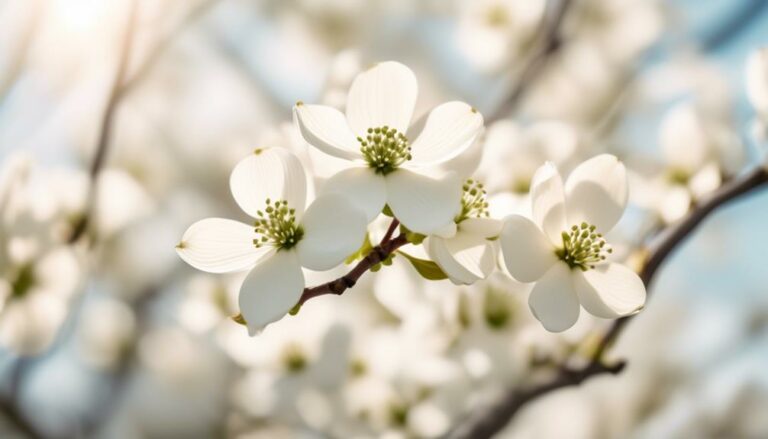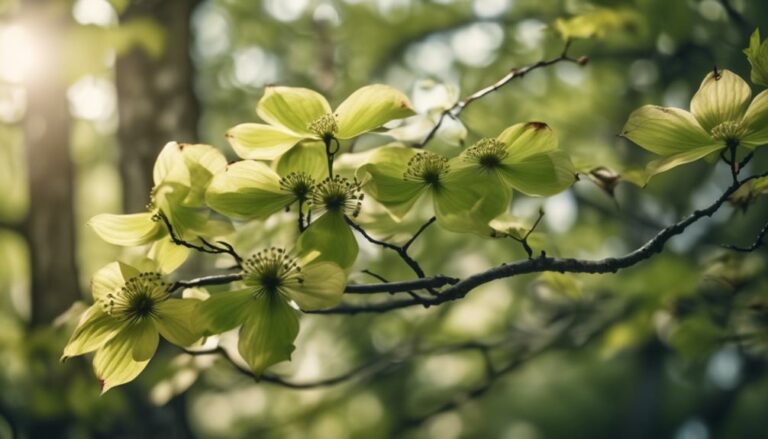Best Dogwood Trees for Spring Bloom: A How-To Guide
Imagine stepping into your backyard on a crisp spring morning, the sun gently peeking through the branches of your dogwood tree, casting a soft glow on its delicate blooms. The sight is nothing short of enchanting, and you can't help but feel a sense of pride and accomplishment.
But how did you achieve this breathtaking display? Which dogwood tree is the secret behind this natural masterpiece? In this guide, we will unlock the secrets to choosing the best dogwood trees for spring bloom, guiding you through the process of planting, caring for, and enhancing the beauty of these magnificent trees.
So, get ready to uncover the wonders of dogwood trees and transform your garden into a springtime paradise.
Choosing the Right Dogwood Tree

When choosing the right dogwood tree for your garden, it's important to consider the specific needs and preferences of this beautiful flowering plant.
Dogwoods thrive in well-drained, fertile, loamy soil with high organic matter. They prefer full sun in USDA zones 5-6, but for zones 7-10, partial shade is ideal.
Spring is the best time to plant dogwood trees, giving them ample time to establish before the summer heat.
Dogwoods offer a stunning display of flowers in various shades of pink, white, or red, adding a vibrant touch to your garden. Some varieties, like the Flowering Dogwood and Pacific Dogwood, produce bright red berries in the fall, attracting birds and adding visual interest.
Consider these types of dogwood trees when selecting the perfect addition to your landscape.
Planting and Caring for Dogwood Trees
Now that you've chosen the perfect dogwood tree for your garden, it's time to dive into the essential steps for planting and caring for this stunning flowering plant.
First, prepare a planting hole that's twice as wide and just as deep as the root ball. Ensure that the soil around the hole is well-drained and has an acidic to neutral pH level.
Gently remove the tree from its container, loosening the root ball if necessary, and place the tree in the hole. Backfill the hole with soil, making sure the tree is upright and the root ball is covered.
Water the tree thoroughly after planting and continue to keep the soil moist, especially during the first year. To retain moisture and suppress weeds, apply a layer of mulch around the base of the tree.
Pruning Techniques for Dogwood Trees

To properly care for your dogwood tree and ensure its health and vitality, mastering the art of pruning is essential. Pruning plays a crucial role in shaping the tree and promoting optimal flowering. When pruning dogwoods, start by selecting the strongest upright shoot as the main trunk.
Next, prune back any long and whip-like shoots to maintain a balanced structure. As the tree grows, use thinning cuts to shape it in subsequent years. It's also important to remove dead wood, crossed branches, and water sprouts. Additionally, thinning the inside of the canopy will improve air circulation and allow more sunlight to reach the lower branches.
Timing is key when it comes to pruning dogwoods. The best time to prune is in late winter or early spring, before the tree starts producing its beautiful spring flowers.
Common Diseases and Pests of Dogwood Trees
As you care for your dogwood tree and master the art of pruning, it's important to be aware of the common diseases and pests that can affect its health and vitality.
Routine checks for pests are crucial in maintaining a healthy tree. If you notice any insects, it's important to correctly identify them. If you're unsure, seeking help from an Extension agent can provide you with proper pest identification and control methods.
Common pests that can affect dogwood trees include the dogwood borer, twig borer, and club gall. These pests can cause damage to the tree, affecting its overall health and spring bloom. It's important to take appropriate measures to control their population and prevent further damage.
In addition to pests, dogwood trees can also be susceptible to various diseases. Powdery mildew, anthracnose, crown gall, and trunk canker are some common diseases that can affect dogwood trees. These diseases can lead to leaf and flower discoloration, defoliation, and even tree death if left untreated.
To reduce the incidence of pests and diseases, providing mulch beneath the canopy of your dogwood tree can be beneficial. Mulch helps to reduce trunk damage and creates an unfavorable environment for insects and diseases to thrive.
Enhancing Spring Blooms: Tips and Tricks

Looking to enhance the spring blooms of your dogwood tree? Here are some tips and tricks to help you achieve vibrant and abundant blossoms.
- Provide the Right Soil: Dogwood trees prefer well-draining soil that's high in organic matter. Ensure the soil is slightly acidic, with a pH level between 5.5 and 6.5. This will create the perfect environment for your tree to thrive and produce beautiful flowers.
- Water Adequately: Proper watering is crucial for the health and blooming of your dogwood tree. Water the tree deeply and regularly, especially during dry spells. Be careful not to overwater, as this can lead to root rot.
- Mulch: Apply a layer of organic mulch around the base of the tree, a few inches away from the trunk. Mulch helps retain moisture, regulates soil temperature, and suppresses weed growth, all of which contribute to healthier and more abundant blooms.
Conclusion
In conclusion, planting and caring for dogwood trees can be a rewarding experience for both novice and experienced gardeners.
By following the tips and techniques outlined in this guide, you can choose the right dogwood tree for your needs, ensure its healthy growth, and enjoy its beautiful spring blooms.
Don't miss out on the benefits of having a dogwood tree in your garden – start your journey to a vibrant and flourishing landscape today!







